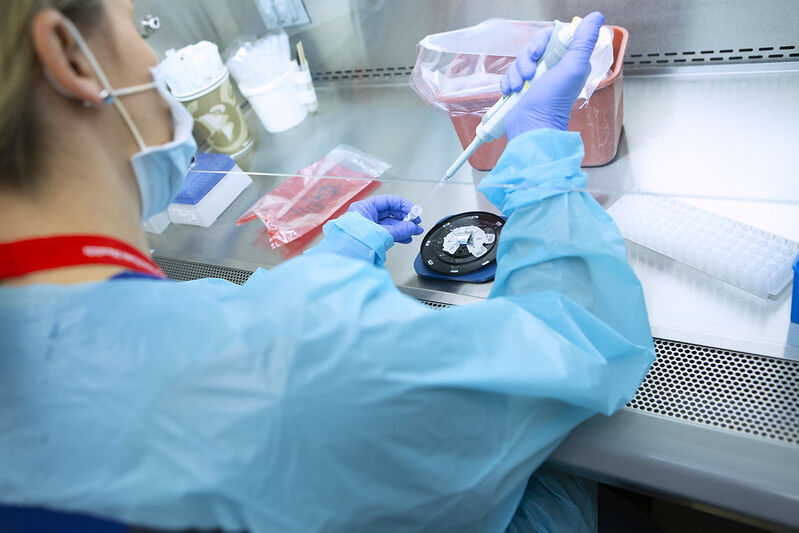Iowa State engineers work to create mail-in, no-contact COVID-19 test
October 22, 2020
Researchers at Iowa State are developing ways to decrease the risk of health care workers and analyzers by creating mail-in, no-contact COVID-19 tests.
Nigel Reuel, an assistant professor of chemical and biological engineering with a doctorate in chemical engineering, is leading a team to develop the tests.
“This approach offloads the burden of diagnostics from health workers, eliminates the increased use of limited personal protective equipment and provides a better response to outbreaks,” he wrote in a press release.
An individual would take their own nasal and cough samples at their home. The samples would be spread on the testing card then placed in an envelope overnight. Once incubated, the card would be dropped at a collection center or in the mail.
Post office workers would not be at risk because the envelope is coated with a virus killer.
Once the envelope reaches its destination, an electronic reader will automatically send results, requiring no health care workers or lab technicians to be put at risk.
Adam Carr and Jared Dopp, graduate students in chemical and biological engineering at Iowa State, are continuing work on mail-in COVID-19 tests under mentor Reuel.
“The wireless sensor is based upon inductive coupling and wireless power transfer, similar to how wireless phone chargers work,” Carr said.
Reuel received a rapid response research grant from the National Science Foundation to fund the project.
Reuel said his motivation for the research project was based on the personal protective equipment (PPE) shortages. In April 2020, the Iowa Department of Public Health released a PPE shortage order.
The Centers for Disease Control and Prevention (CDC) recommends health care workers follow specific protocol while interacting with possible COVID-19 patients. Gowns, N95 filtering respirators, face masks, face shields and gloves are examples of PPE the CDC recommends.
Until now, COVID-19 test analysts also wear PPE to be protected from the virus.
“A test which could be sealed for analysis would allow people analyzing samples to not have to use up PPE and save it for medical professionals,” Carr said.
Reuel also said he envisions a test where the results come back consistently faster than some in-person options.
According to the Iowa State University COVID-19 weekly public health data update, 11,184 students, faculty and staff have been tested for COVID-19 as of Oct. 19.
This number does not include the mandatory testing at Lied Center for on-campus residents that took place in August.
Jenna Fisher, sophomore in early childhood education, got tested three times, but she chose not to be tested through Iowa State.
“I heard from several different friends that ISU [testing] took longer than TestIowa, so I just always went to TestIowa,” Fisher said. “I got a test taken at the same time as one of my friends who went to the Iowa State testing center and I got my results almost an entire day ahead of him.”
It is important to Fisher to get her results back quickly in order to decrease her risk to others.
Even with this in consideration, Fisher said she doesn’t think she would use a mail-in COVID-19 test.
“I wouldn’t take the mail-in option because I would be afraid I didn’t do it right,” she said.
Sophie Adams, freshman in global resource systems, said she would take a mail-in test but would question the accuracy.
“I’m not sure how accurate I would think my results are because it’s not done in an office and the results are back so soon,” she said.
Although the mail-in tests are not ready for distribution, Carr is optimistic.
“We have achieved most of the steps [of the test] in isolation from replicating viral genetic material to analyzing the presence of that material through a reporter protein on the wireless sensor,” he said. “Now we are working on performing these steps in concert.”
The final goal Reuel wants to accomplish is mapping outbreaks better.
He said he believes this technology could help provide an up-to-date outbreak map without endangering anyone. The technology could also be adapted to combat other diseases or future pandemics.
“I have no idea what my professors look like without masks,” Adams said. “I definitely think a better mapping of [COVID-19] outbreaks would improve the situation. It would hold more people accountable.”







